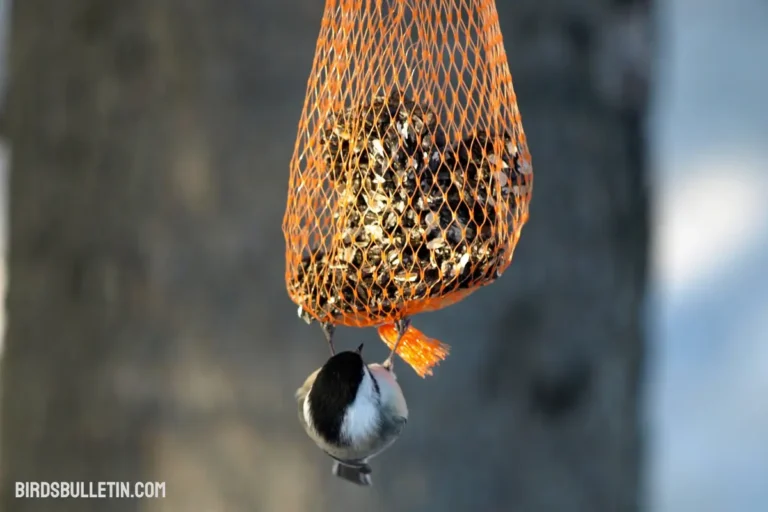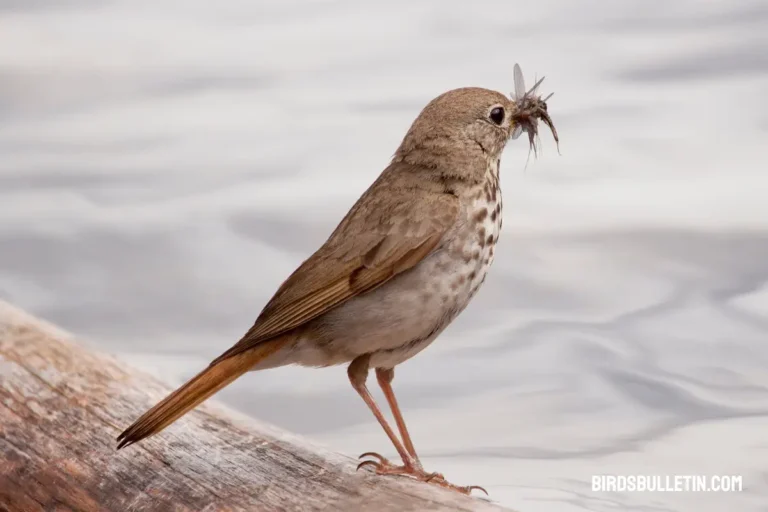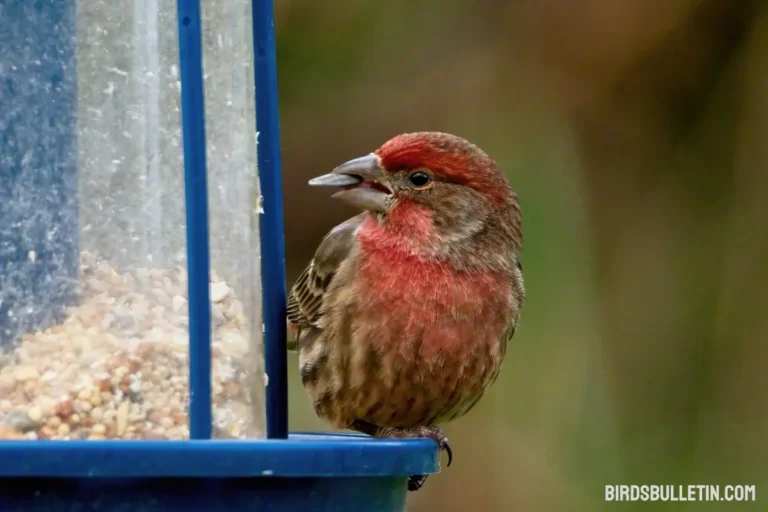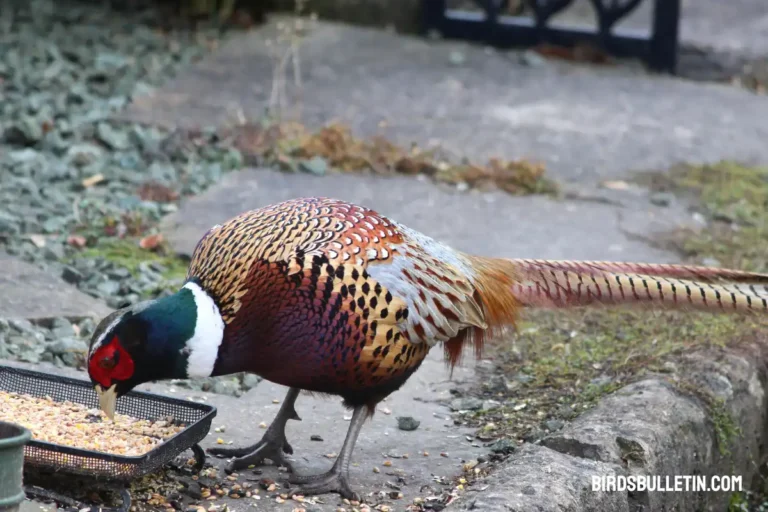What Does the Scissor-Tailed Flycatcher Eat?
The scissor-tailed flycatcher is a striking bird common across the southern Great Plains of North America. With its deeply forked tail and aerial agility, the scissor-tail is adapted to catch insects on the wing. However, this flycatcher’s diet changes depending on seasonal availability.
This bird eats a variety of arthropods along with some plant-based foods to meet their nutritional needs. Scissor-tailed flycatchers primarily feed on insects and other terrestrial arthropods they capture mid-flight from exposed aerial perches.
Major prey include grasshoppers, crickets, beetles, ants, bees, wasps, moths, butterflies, and spiders. They catch flying insects when possible but rely more on berries and seeds in certain habitats to make it through the coldest months until spring.
Looking for more articles about birds’ food and diet
Favorite Scissor-tailed Flycatcher Foods
| Food Type | Examples |
|---|---|
| Insects | Grasshoppers, crickets, beetles, ants, bees, wasps, butterflies, moths, flies |
| Spiders | Various spider varieties |
| Berries | Hackberries, mulberries |
| Fruit | Cherries, oranges, grapes |
| Seeds | Native grasses, wheat, corn, millet |
How Often Do Scissor-Tails Feed?
Scissor-tailed flycatchers feed opportunistically throughout the day, catching insects on the wing. They require a large amount of food to maintain their high metabolism and will eat every 10-15 minutes when food is abundant.

During nesting season, the male and female take turns leaving the nest to hunt, returning frequently with food for their hungry hatchlings.
What Time of Day Do They Forage?
They are most active in their foraging during the early morning and late afternoon hours. They will hunt throughout the daylight periods when insects are active but tend to forage most diligently at dawn and dusk.
Their scissor-like tails seem designed to catch insects in mid-air as the long feathers stream behind them, snapping shut on unwary prey during the feeding frenzies of dawn and dusk. Though opportunistic, scissor-tails take advantage of peak insect activity periods to maximize their hunting success.
How Do Scissor-Tails Gather Food?
Here is how scissor-tailed flycatchers gather food:
01. Scan for prey
Scissor-tails will often perch on a high vantage point like a tree branch, utility wire, or fence post. From their perch, they scan the surroundings for potential prey – typically insects like grasshoppers, dragonflies, beetles, and flies.
02. Launch into flight
When a scissor-tail spots prey, it will quickly launch itself into the air in pursuit. Scissor-tails are agile, aerobatic flyers that can swiftly change directions mid-air. They use their long, forked tail feathers to deftly maneuver towards their target.
03. Snatch prey mid-air
A key hunting strategy of scissor-tails is catching insects mid-flight. With incredible aerial skill, they grab unsuspecting insects right out of the air with their beaks. Their wide mouths allow them to snatch even large bugs.
04. Return to perch
After nabbing an insect, scissor-tails will return to their perch to eat. They usually gulp down small insects whole. For larger prey, they may bash it against the branch to disable wings and break appendages for easier swallowing.
05. Repeat
Scissor-tails are voracious predators. After finishing a meal, they quickly return to scanning for more prey opportunities from their vantage point. A successful scissor-tail can consume hundreds of insects each day during peak hunting activity.
What Do They Eat in Winter?
During the winter months, the diet of Scissor-tailed Flycatchers changes with prey availability. As insects become scarcer, they shift to eating fruits and seeds more often to sustain themselves. Bird species like juniper, poison ivy, Virginia creeper, sumac, bayberry, and wax myrtle offer winter berries that flycatchers seek out.
They also don’t pass up opportunistic insect catches when the weather is warm enough for flying bugs. Though their diet changes seasonally, Scissor-tailed Flycatchers are versatile foragers.
What Do Baby Scissor-Tails Eat?
The diet of baby Scissor-tailed Flycatchers consists almost entirely of insects and other arthropods delivered to the nest by both adult parents. Some common prey items include grasshoppers, crickets, beetles, flies, moths, caterpillars, spiders, and more.
The adults capture bugs on the wing and bring them back for the nestlings to swallow whole. The voracious young can eat up to their own body weight in insects daily. This high-protein diet allows the baby birds to grow and develop quickly.
Frequently Ask Questions
01. What percent of a scissor-tail’s diet is insects?
Insects comprise nearly 100% of the food consumption for scissor-tailed flycatchers year-round. Rare exceptions may include late summer berries or seeds ingested opportunistically but aerial insects undoubtedly dominate intake.
02. Do scissor-tails ever drink water?
While deriving preformed water adequately from insect prey, scissor-tails occasionally drink or bathe in rainwater collected on foliage or other small pooled surface water sources when available situationally.
03. Do the flycatchers eat while flying or only perched?
Scissor-tails exclusively capture insect prey while in rapid aerial flight through choreographed midair maneuvers. The only instances of perched feeding occur when provisioning fledglings still developing flight skills.
04. How many insects might one scissor-tail eat daily?
The quantity of aerial insects a scissor-tail consumes per day depends on prey density, availability, size, and energy values. But based on their near-constant active hunting, daily insect intake likely ranges from several hundred smaller insects up to 80-100 larger prey items.
In Conclusion
The scissor-tailed flycatcher truly lives up to its name – aerial agility allows the birds to expertly “scissor” through the air snapping up insects. While insects make up the majority of their diet, scissor-tails supplementally eat plant foods like berries and seeds based on seasonal availability.
Open habitats with scattered perches provide ideal conditions that enable this athletic flycatcher to put on dramatic midair hunting displays flashing its iconic forked tail. With ample flying insects across wide-open southern landscapes, scissor-tailed flycatchers flourish.
References
- Billerman, S. M., Keeney, B. K., Rodewald, P. G., & Schulenberg, T. S. (2020). Scissor-tailed Flycatcher (Tyrannus forficatus), version 1.0. In Birds of the World (P. G. Rodewald, Editor). Cornell Lab of Ornithology, Ithaca, NY, USA. https://doi.org/10.2173/bow.sctfly.01
- Smith, J. L. (2018). “Avian Foraging Ecology: Ecological Consequences for Populations in Variable Environments.” Cambridge University Press.
- Bent, A. C. (1942). “Life histories of North American flycatchers, larks, swallows, and their allies.” U.S. National Museum Bulletin, 179.
- Sibley, D. A. (2000). “The Sibley Guide to Birds.” Alfred A. Knopf.







